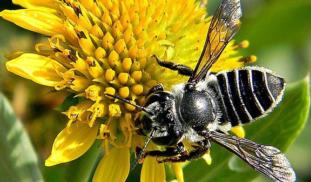Please wait...
About This Project
We rely on bees to pollinate plants critical for our survival, but viruses threaten these key pollinators. Bees infected with viruses experience devastating effects, including deformities and larval mortality. Our project will look at the influence of bee biodiversity and species interactions on the prevalence and distribution of four viruses in wild bee communities. By expanding our understanding of how bee viruses spread, this project can provide insight into conservation strategies.
More Lab Notes From This Project

Browse Other Projects on Experiment
Related Projects
How do polar bears stay healthy on the world's worst diet?
Polar bears survive almost entirely on seal fat. Yet unlike humans who eat high-fat diets, polar bears never...
Uncovering hidden insect diversity associated with a likely undescribed gall-forming midge
Does a likely undescribed species of gall-forming midge (pers. comm. Ray Gagné) on Eriodictyon plants (Yerba...
Macrofungi of the California archipelago
The eight islands of the California Archipelago are a well-studied biodiversity hotspot — but we know almost...


